
Note to Sac State Students
I am always looking for a student or (better yet) a group of students to do a research project with. If you would like to research with me, please send me an email or drop by my office.
Research Interests
I am interested in all varieties of combinatorics, including enumerative, extremal, probabilistic, spectral and algebraic. I very much enjoy collaboration. For more information please see my (probably outdated) CV.
Past and present students
Travell Criner (2019/20). An
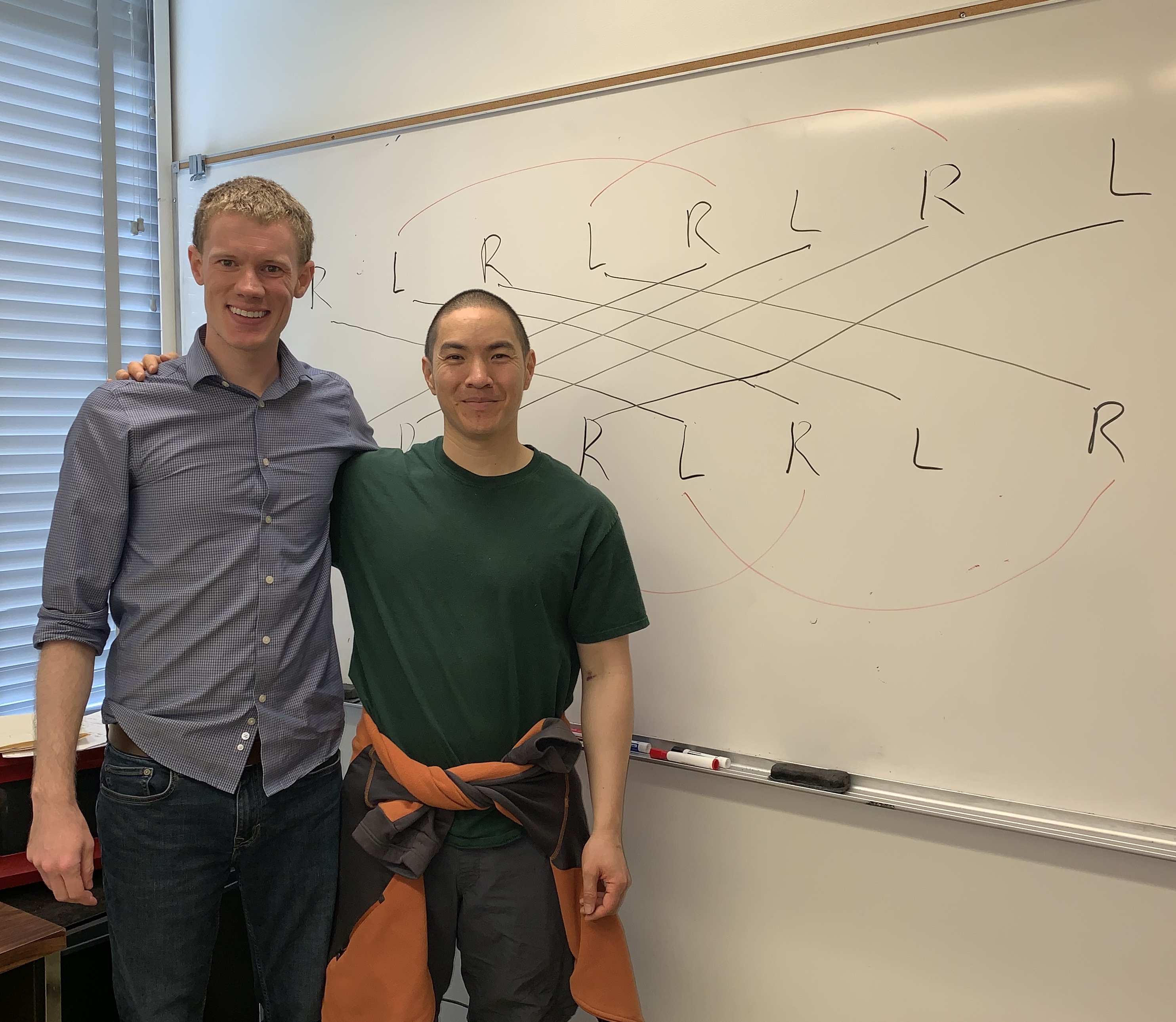 Barry Chin (2019/20).
Barry and I asked how long a juggling patten would be expected to last if each throw contains some probability of being dropped.
We found the expected value for an array of single- and team-juggling patterns. For example, the typewriter patten consists of
Barry Chin (2019/20).
Barry and I asked how long a juggling patten would be expected to last if each throw contains some probability of being dropped.
We found the expected value for an array of single- and team-juggling patterns. For example, the typewriter patten consists of
jugglers on an arc around a single juggler in the middle. On every
other time-step the middle juggler passes a ball to a person on the periphery and receives one in return. We found the expected
number of throws until a drop for patterns like this one.
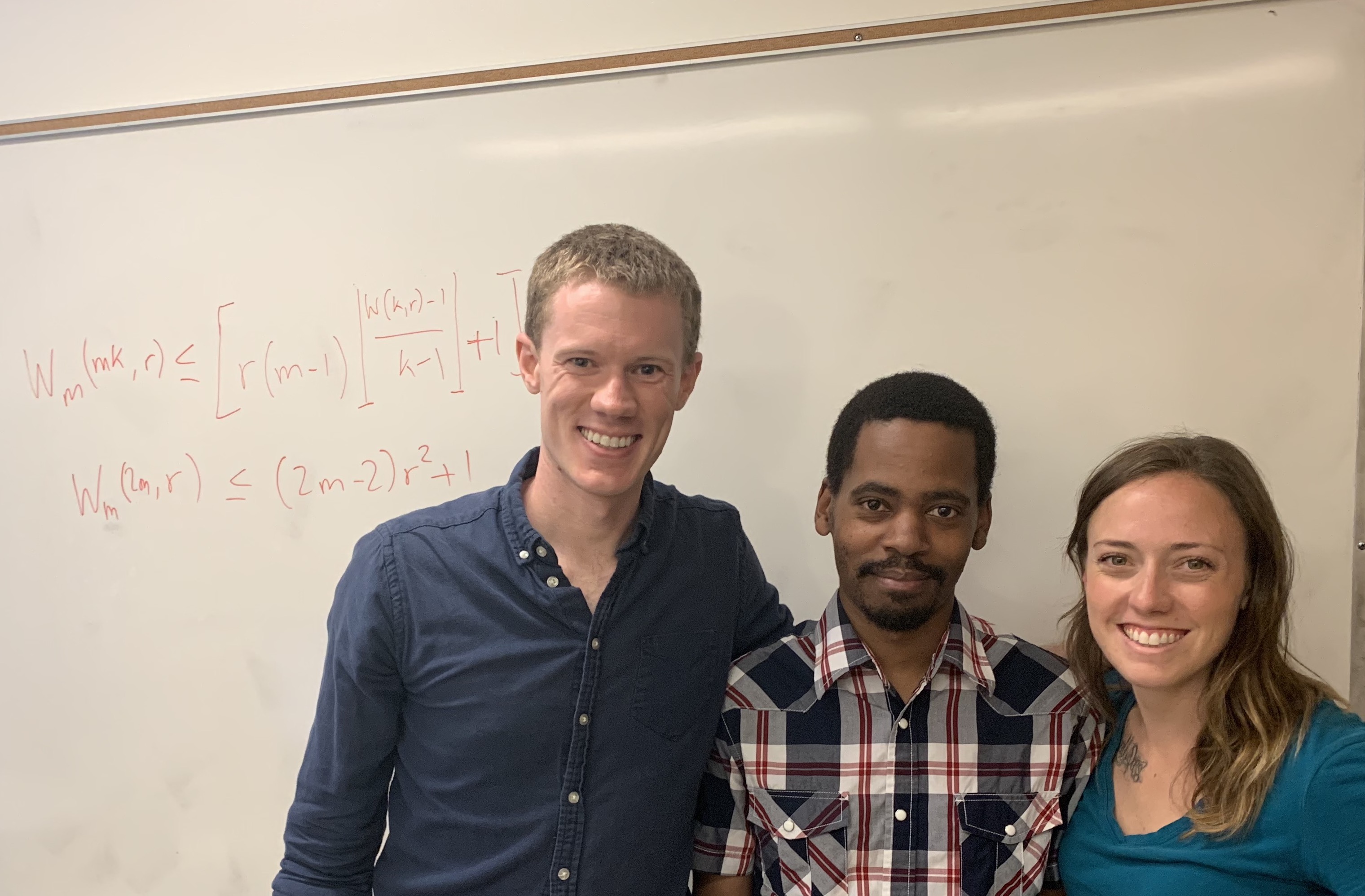 Travell Criner and Morgan Throckmorton (2018/19).
An
Travell Criner and Morgan Throckmorton (2018/19).
An -pseudo progression is an increasing list of number with at most
differences between consecutive elements. What is the smallest
for which every
-coloring of
contains
a monochromatic
-term
-pseudo progression? These are called pseudo Ramsey numbers.
Travell, Morgan, Natalie Hobson and I found many small pseudo Ramsey numbers. Our paper is in progress.
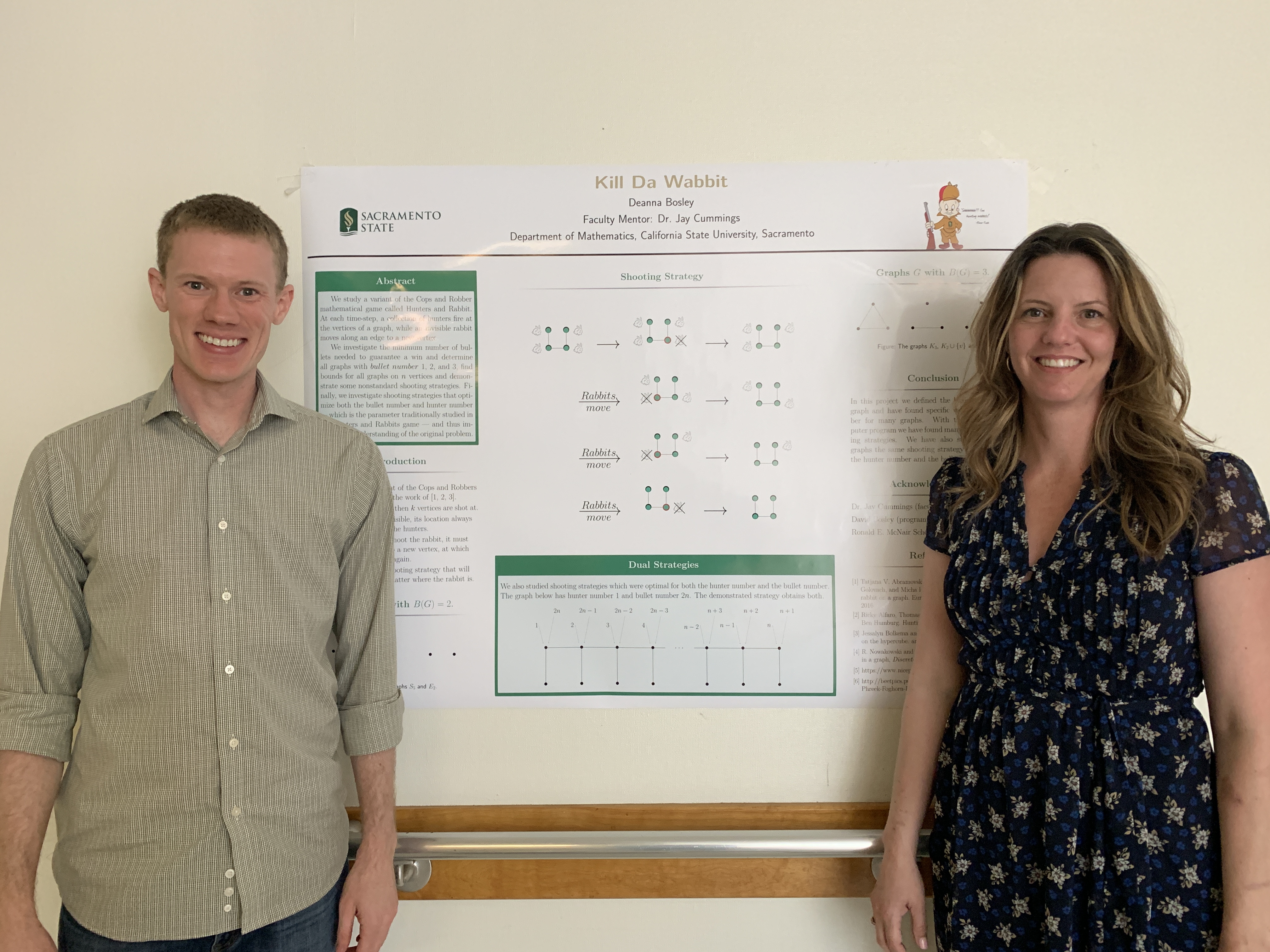 Deanna Bosley (2018/19).
An invisible, omniscient rabbit is hiding behind some bushes.
At each time step, a collection of hunters shoot at some of the bushes, and if the rabbit is behind a bush that they fire at, the rabbit is killed.
Otherwise, the rabbit hops to a neighboring bush and they try again. Deanna and I are investigated what the minimum number of bullets is to guarantee a kill.
Deana'a project was part of the McNair Scholar's Program.
Deanna Bosley (2018/19).
An invisible, omniscient rabbit is hiding behind some bushes.
At each time step, a collection of hunters shoot at some of the bushes, and if the rabbit is behind a bush that they fire at, the rabbit is killed.
Otherwise, the rabbit hops to a neighboring bush and they try again. Deanna and I are investigated what the minimum number of bullets is to guarantee a kill.
Deana'a project was part of the McNair Scholar's Program.
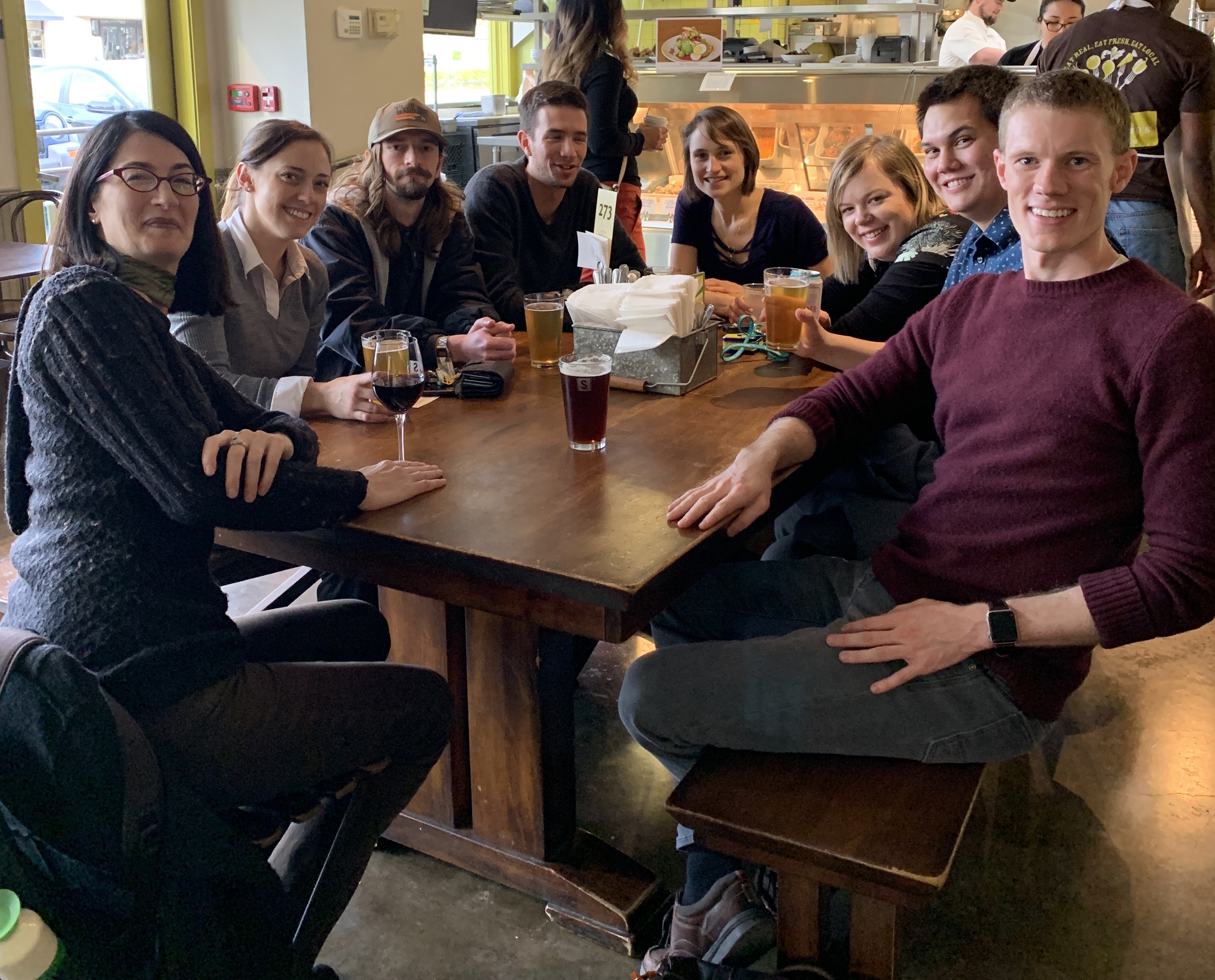 Quin Darcy, Morgan Throckmorton (+ a team at Sonoma State) (2018/19).
Quin, Morgan and I worked with Natalie Hobson, Drew Horton, Keith Rhodewalt and Ry Ulmer-Strack from Sonoma State on a project in enumerative combinatorics.
An
Quin Darcy, Morgan Throckmorton (+ a team at Sonoma State) (2018/19).
Quin, Morgan and I worked with Natalie Hobson, Drew Horton, Keith Rhodewalt and Ry Ulmer-Strack from Sonoma State on a project in enumerative combinatorics.
An -pseudo progression is an increasing list of number with at most
differences between consecutive elements. We counted the number of
-term
-pseudo
progression in
two different ways, checked our counts against a program, and found the generating function for the number of progressions with distinct differences.
This project was supported by an NSF-funded grant through the Center for Undergraduate Research in Mathematics.
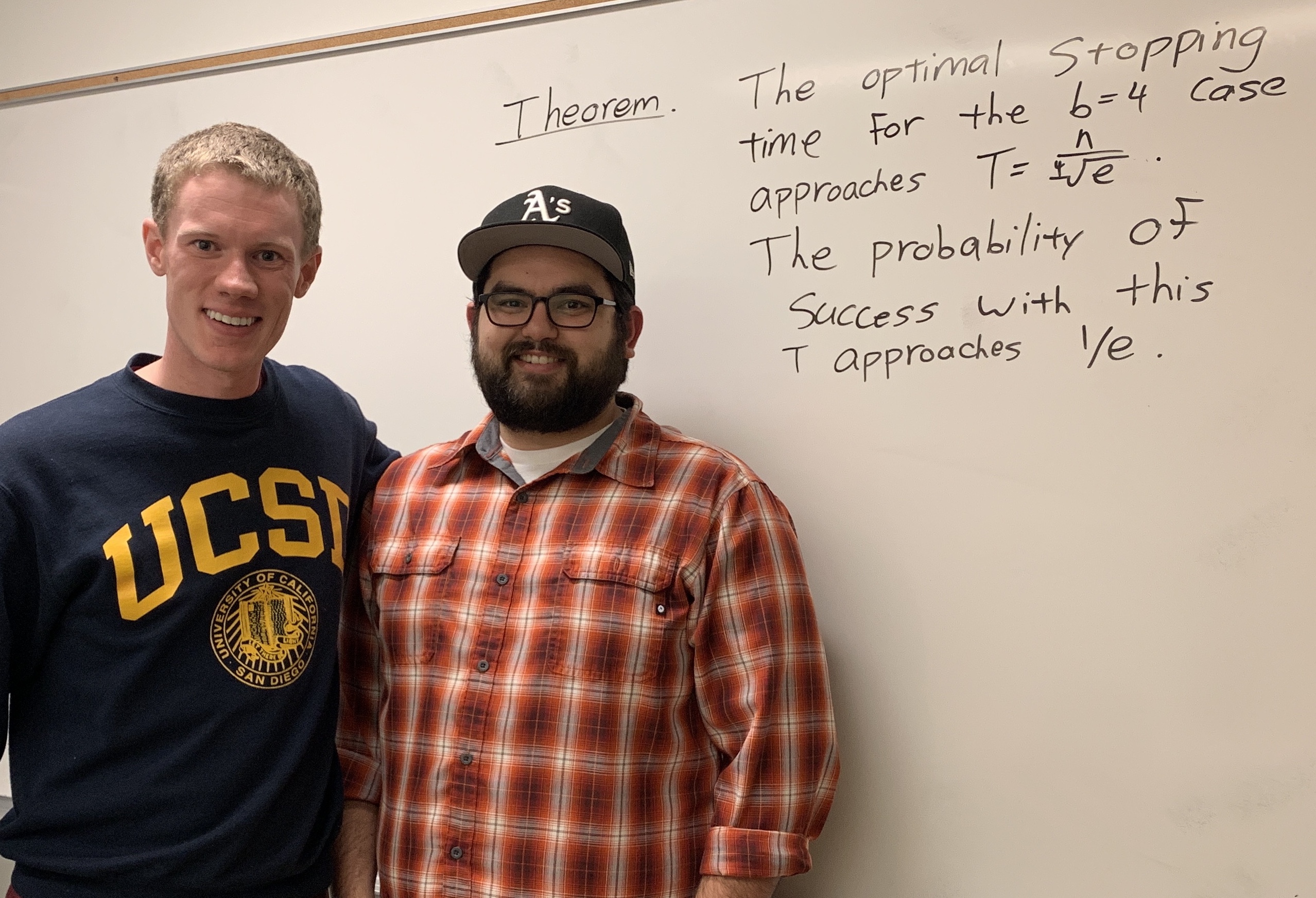 Joe Ezaki (2017/2018). BitTorrent is a popular file sharing protocol in which a user downloads a
file from a large collection of seeders, each of which has the file. The user downloads from
Joe Ezaki (2017/2018). BitTorrent is a popular file sharing protocol in which a user downloads a
file from a large collection of seeders, each of which has the file. The user downloads from
of these seeders, but repeatedly
drops its worst connection and establishes a new one in search of the best
connections.
Joe and I introduced a new modified secretary problem to model BitTorrent and
find precise stopping times for an arbitrary
,
and we showed that the probability of success, for any
,
approaches
. You can view our paper here.
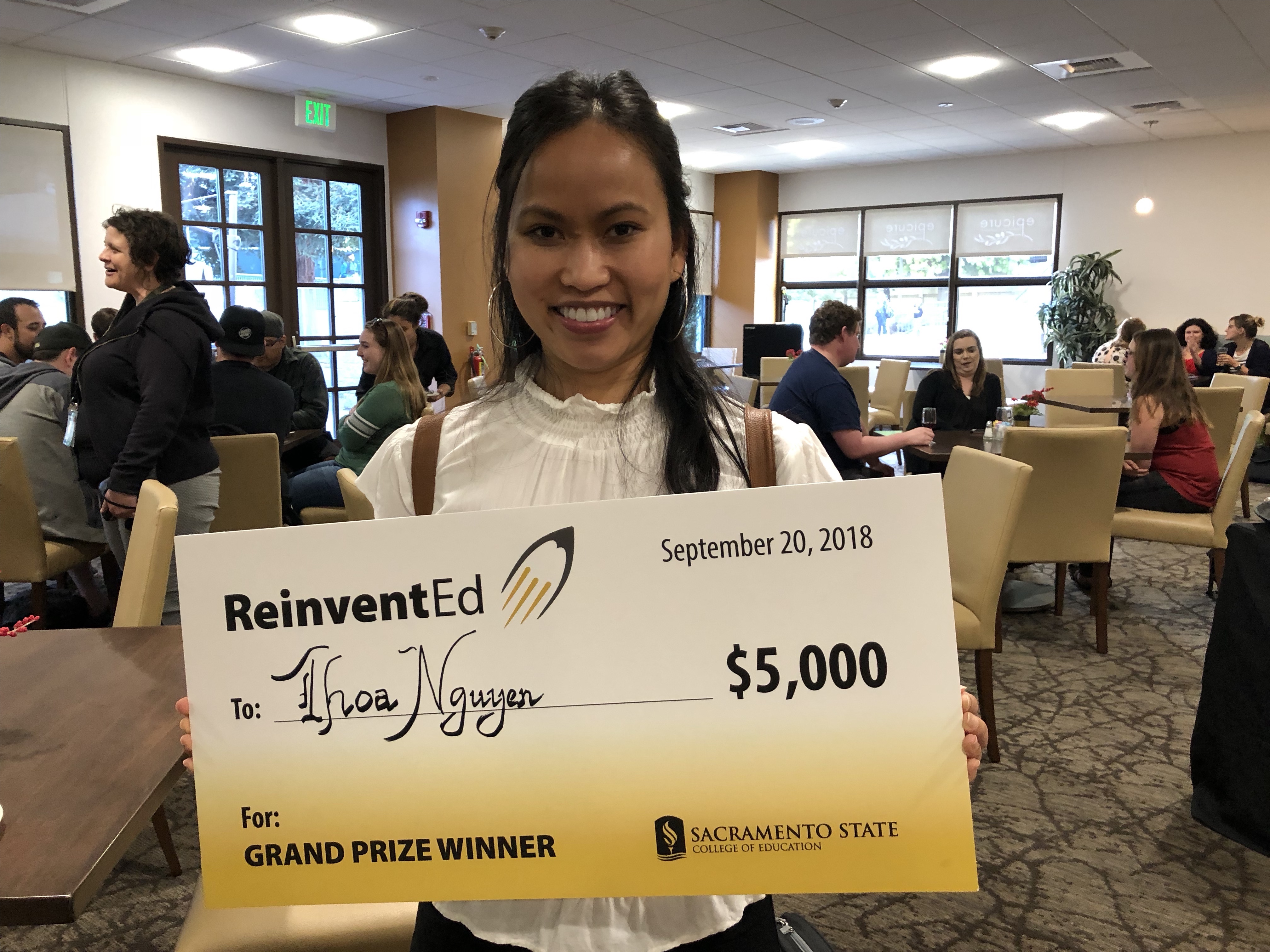 Thoa Nguyen (2017/2018). Thoa is starting a new company called StudyMatch.
From online dating to finding groups of friends, algorithms have connected more people than ever before.
Thoa is reapplying this idea to studying, and is developing an website that will group together suitable people into study groups.
I provided a little help along the way (but probably not enough to get any stock options).
She entered the 2018 ReinventEd competition, hosted by Sac State, and was the grand prize winner.
Thoa Nguyen (2017/2018). Thoa is starting a new company called StudyMatch.
From online dating to finding groups of friends, algorithms have connected more people than ever before.
Thoa is reapplying this idea to studying, and is developing an website that will group together suitable people into study groups.
I provided a little help along the way (but probably not enough to get any stock options).
She entered the 2018 ReinventEd competition, hosted by Sac State, and was the grand prize winner.
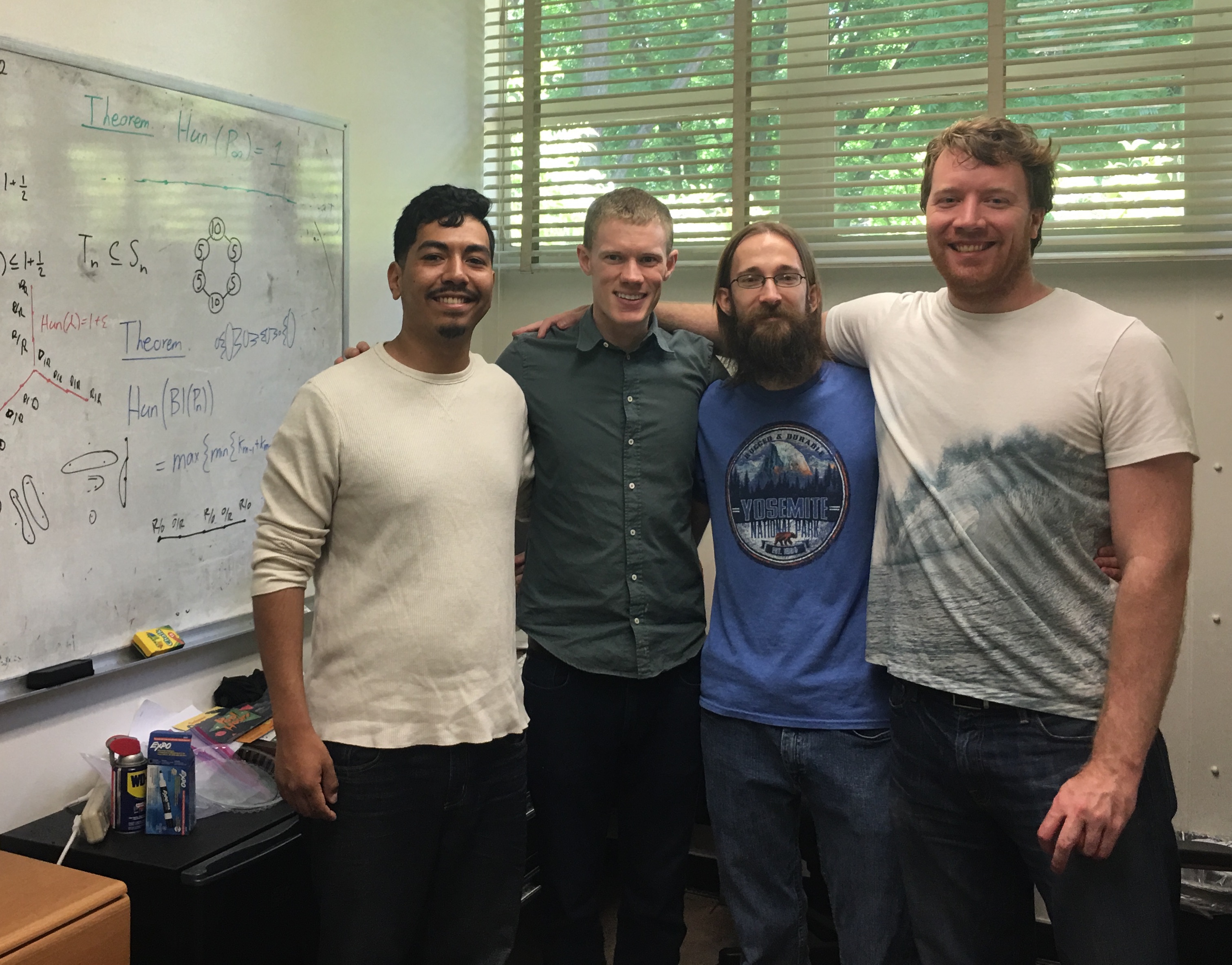 Ricky Alfaro, Tom Blankenship and Ben Humburg (2017/2018/2019). An invisible, omniscient rabbit is hiding behind some bushes.
At each time step, a collection of hunters shoot at some of the bushes, and if the rabbit is behind a bush that they fire at, the rabbit is killed.
Otherwise, the rabbit hops to a neighboring bush and they try again. Ricky, Ben, Tom and I are investigating how many hunters are needed to guarantee a kill in finite time.
Ricky Alfaro, Tom Blankenship and Ben Humburg (2017/2018/2019). An invisible, omniscient rabbit is hiding behind some bushes.
At each time step, a collection of hunters shoot at some of the bushes, and if the rabbit is behind a bush that they fire at, the rabbit is killed.
Otherwise, the rabbit hops to a neighboring bush and they try again. Ricky, Ben, Tom and I are investigating how many hunters are needed to guarantee a kill in finite time.
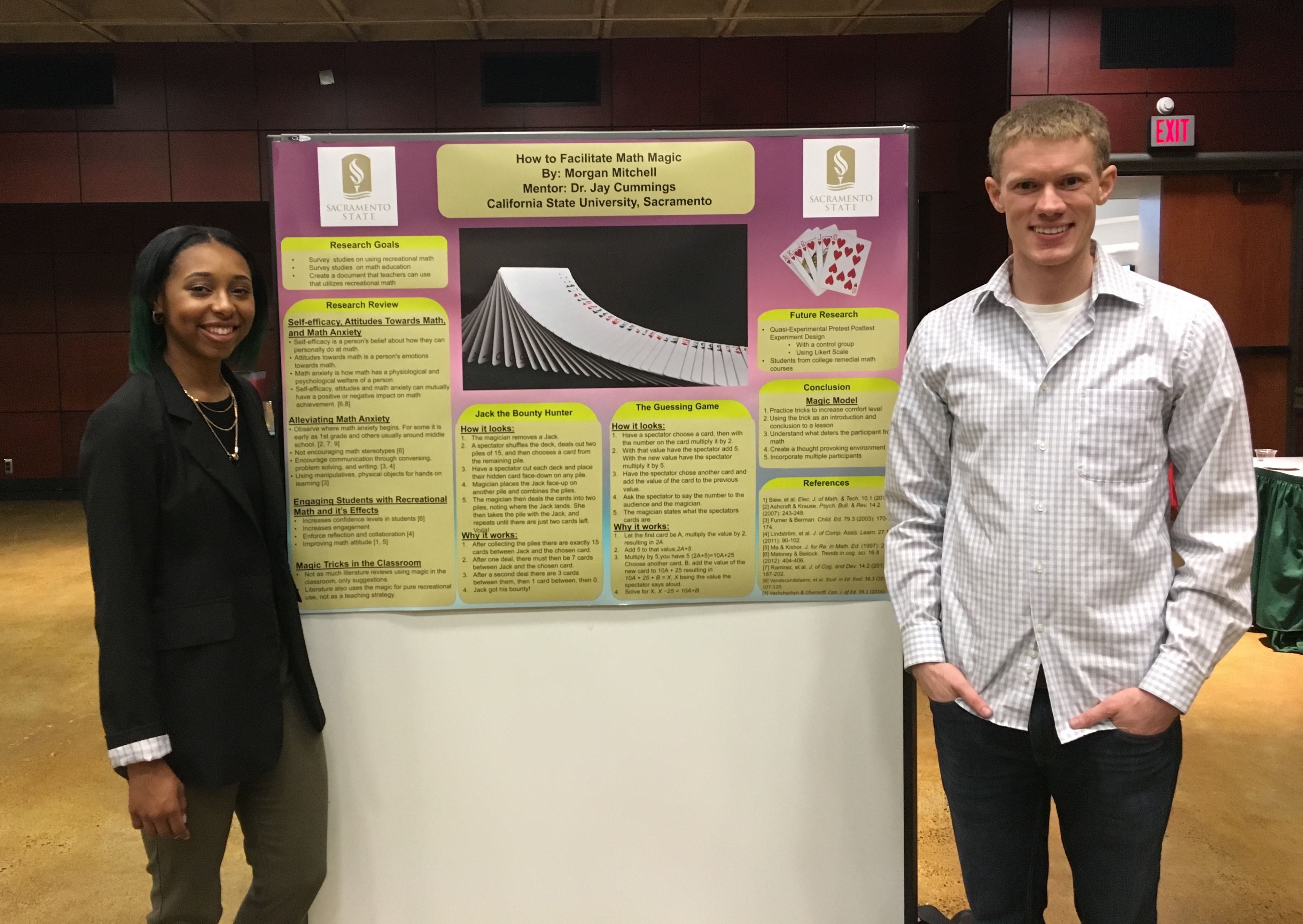 Morgan Mitchell (2016/17). Morgan and I studied the use of magic tricks in the classroom as a means to engage students.
We wrote a survey of the literature on the effectiveness of using mathemagical tricks as an educator, and concluded that they are indeed useful.
We then collected and explained many useful tricks, and suggested times in a classroom that they could be used.
Morgan's project was part of the McNair Scholar's Program, and won first prize in the education division at the 2017 SAEOPP McNair/SSS Scholars Research Conference in Atlanta, Georgia.
You can view our work in her McNair Journal paper here.
Morgan Mitchell (2016/17). Morgan and I studied the use of magic tricks in the classroom as a means to engage students.
We wrote a survey of the literature on the effectiveness of using mathemagical tricks as an educator, and concluded that they are indeed useful.
We then collected and explained many useful tricks, and suggested times in a classroom that they could be used.
Morgan's project was part of the McNair Scholar's Program, and won first prize in the education division at the 2017 SAEOPP McNair/SSS Scholars Research Conference in Atlanta, Georgia.
You can view our work in her McNair Journal paper here.
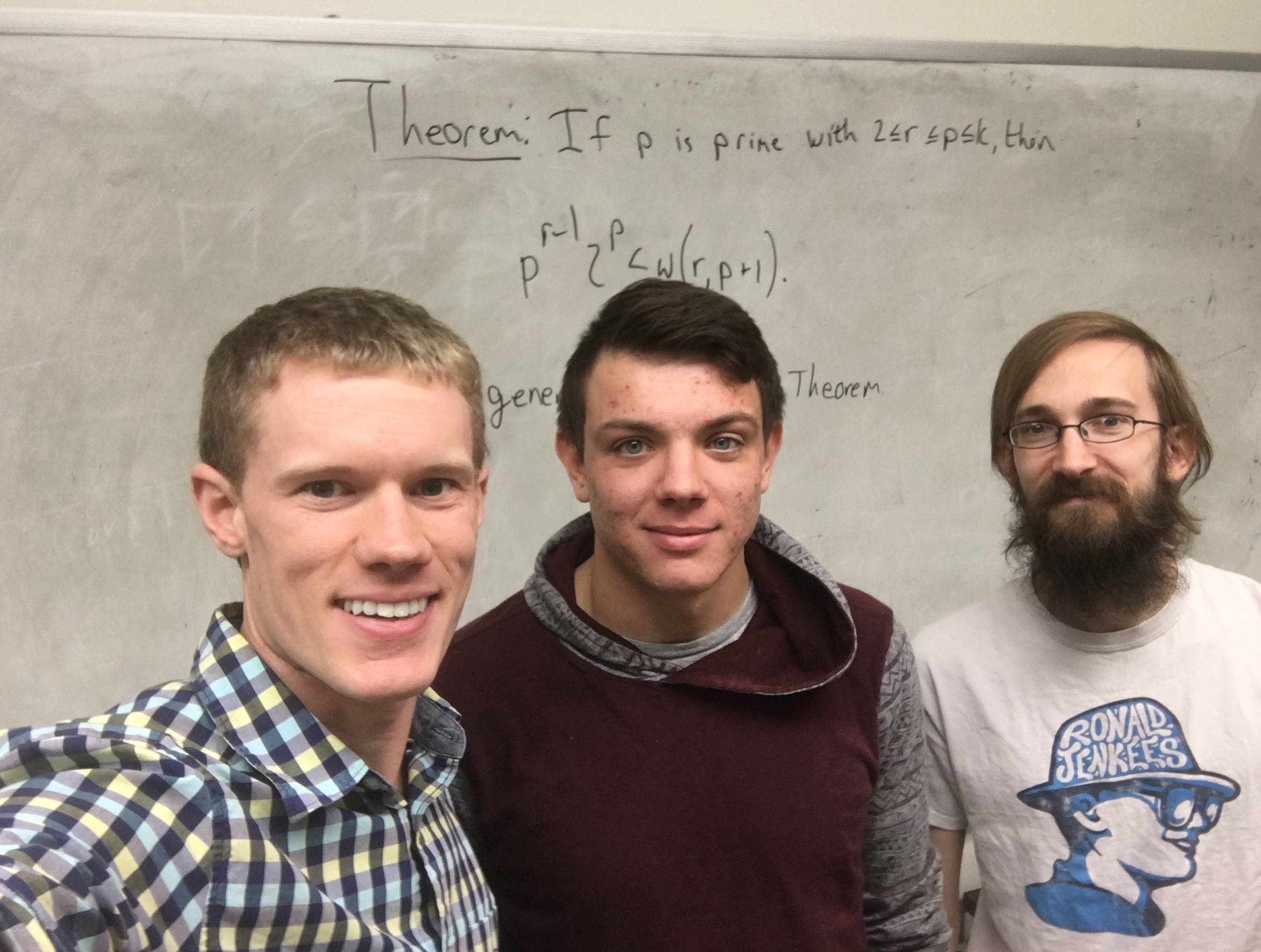 Vlad Taranchuk and Tom Blankenship (2016/17). Vlad, Tom and I began by studying palindromic Ramsey theory,
which asks for the smallest
Vlad Taranchuk and Tom Blankenship (2016/17). Vlad, Tom and I began by studying palindromic Ramsey theory,
which asks for the smallest for which every palindromic (i.e. symmetric)
-coloring
of
contains a monochromatic
-term
arithmetic progression. Theorems that we proved on this can be viewed in Vlad's McNair paper here.
PhD Research
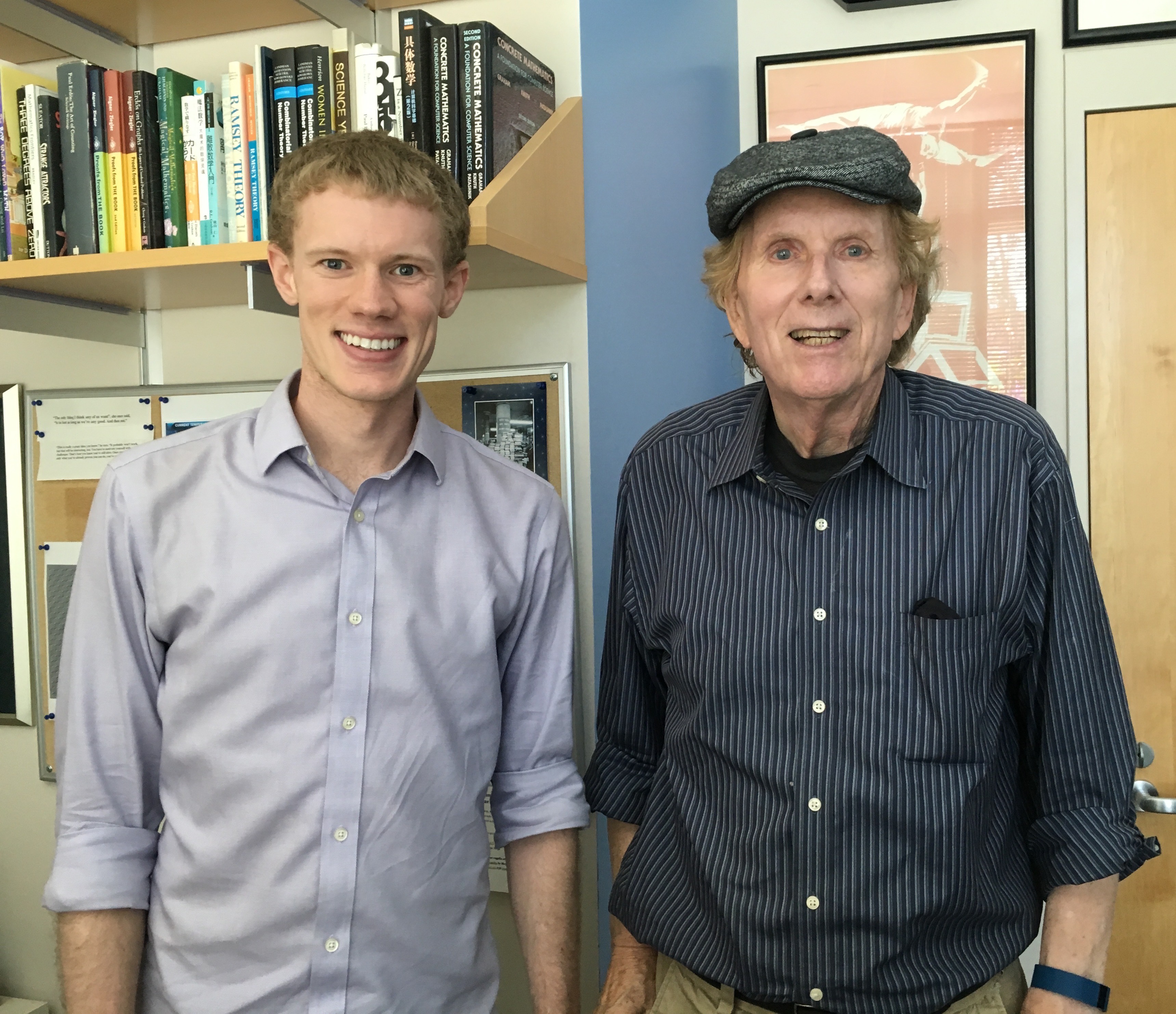
Ron Graham, et al. My PhD dissertation was primarily on two problems: Juggling cards and edge flipping in graphs. You can view my dissertation here.
Other people I published with during this time include Fan Chung, Steve Butler, Willem Haemers, Michael T8, Zoltán Blázsik, Christine Kelley, Aalipour Ghodratollah, Aida Abiad, Zhanar Berikkyzy, Jessica De Silva, Wei Gao, Kristin Heysse, Leslie Hogben, Franklin Kenter, and Jephian C.-H. Lin